How To Travel Light, Eat Well & Leave The Cooler at Home
By Kurt Iverson
He surprised us on Day 5 of the trip. We had fished all day through the braids of the river, each of us landing a silly number of rainbows, Dolly Varden, and grayling. We hadn't traveled in the boats much; instead, we mostly shuffled our way downstream, leap-frogging and fishing past one another, with the last guys in line pulling the rafts through. When we finally chose a gravel bar for our campsite, it was 8:30pm. We were bone-tired, but in a good way. Still, there were rafts to unload, tents and tarps to set up, and each of us was a little woozy with hunger. "I'll do dinner," he said. "If one of you dogs can help me with firewood, I'll get right on it."
What he didn't tell us was that a couple weeks before the trip he had hot-smoked a whole turkey. He cut up and vacuum sealed the cooked bird, and froze it solid. Then, the night before we left town, he selected 5 large baking potatoes, draped them in moist paper towel, and zapped each one in a microwave oven for 10 minutes. The partially-cooked potatoes were now wrapped in foil. To prepare the meal that night, all he had to do was warm the turkey and finish baking the potatoes over the fire. Side dishes included canned cranberry sauce and a spicy-sour cole slaw. Think about it: you've been rowing, wading, fishing, and schlepping gear all day. Now you're finally sitting by a nice fire with a cocktail in your hand. It's a gorgeous evening in Western Alaska, and somebody hands you a plate of food like that…
If you're planning an extended do-it-yourself (DIY) float or tent-based trip in Alaska, an important task will be to put together your menu. Now, we have friends who are perfectly content with coffee and a Power Bar for breakfast, a fresh dip of Copenhagen for lunch, and Hormel canned chili and beer for dinner. And that's all good. We've gone that route ourselves a few times. But nowadays, we're usually more inclined to go up the food scale a bit for our backcountry journeys, without letting the menu get too complicated, expensive, or time consuming to prepare. These are, after all, fishing trips. And while we recognize that putting together a secure camp and sharing some good grub is a big part of the enjoyment, we have to balance those considerations with the time that we want to spend fishing, floating, or just plain relaxing. More often than not, we'll leave the fancy streamside meals to fishing and rafting guides who are getting paid to do such stuff.
That said, we shy away from common mass-produced freeze-dried meals. Again, we don't criticize others who are happy to go that way, and we fully recognize the freeze-dried advantages. It's just that we don't find such meals very… satisfying. And that says nothing about their relative high cost, and the near-certain (ahem) "gastrointestinal" side effects. Instead, we try to put our efforts towards tasty, nourishing meals straight from the grocery store shelves that don't involve a lot of prep time and often don't need much – if any – refrigeration.
It's not uncommon that we decide to forego insulated coolers, because they are heavy and bulky. Plus, a cooler doesn't do you much good unless you bring plenty of ice, which adds even more to the weight and space issues. Sometimes dry ice can be an option, but that presents its own set of complications - not the least of which is that you can't fly with dry ice on commercial airlines, and it's often unavailable in the remote Alaska villages where you begin your trip. Your situation may boil down to the fact that an iced cooler in the Alaska backcountry is a luxury that just isn't worth bothering with. And remember, a certain amount of freshness can be maintained by keeping food out of the direct sun, and on the river-chilled bottom of the boat.
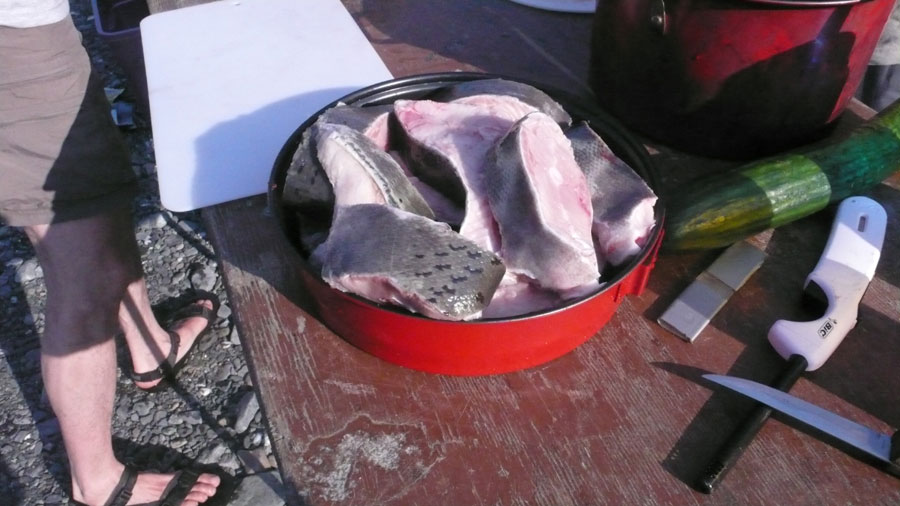
Another important consideration for your float trip menu is that you will have a ready source of protein for the taking nearly every day. Fillet those fish and eat them. Grill them, fry them, cut them up and put them in chowders, and mash the cooked leftovers into sandwich spread - Alaska is a place where you can do this without guilt.
In addition, here are a few other random tips and ideas we've zeroed in on over the years:
- We love long-handled grill baskets. The model we use is designed for cooking fish, but we also find it useful for open-fire cooking of meats and vegetables. The basket's most important use is to easily move food away from hot spots or flare-ups in the cook fire. If you can fit them in, bring grill baskets.
- Vegetables that travel well: potatoes, carrots, onions, garlic, cabbage, cauliflower, and bell peppers. Keep them dry and cool and they'll easily last through your trip.
- A retort pouch is a sealed aluminum foil bag - think of it as a "flexible can". To prepare food stored this way, all you have to do is drop the pouch in hot water (or you can even skip that and eat the food cold). Our favorite brands and flavors of pouched sauces are Curry Simple (any flavor), Kitchens of India (Kidney Bean or Chick Pea Curry), and Tasty Bites (Bombay potatoes). Cooked chicken, smoked salmon, and other seafood also comes packaged in retort pouches, and is equally good. These have become float trip mainstays for us.
- Among the many brands of grocery-store grains and pastas, we find ourselves drawn to the Near East brand of flavored rices and couscous (good for breakfast even), Zatarains red beans and rice, and Knorr cheese pasta or rice side dish mixes. For dried soups, we like the Nile brand for single-serving , "cup of soup" sizes, and for large multiple-serving sizes , we often choose Bear Creek brand, which we find even more appealing if we beef them up with whatever vegetables or protein we have on hand.
Shown below is an actual grub list we used on a 3-person, 7-night float trip in Western Alaska last summer. We travelled on the airlines with the food packed in plastic totes, then we transferred the goods to dry bags for the trip. All the fresh meat products were frozen ahead of time and were packaged in vacuum-sealed pouches. The curry sauces and dried soups were purchased in retort pouches or were factory-sealed in waterproof sacks. The dried goods that weren't already in waterproof sacks - rice, couscous, pasta, breads, etc. - we sealed in ziplock bags before going into the dry bags, a "double bagging", if you will.
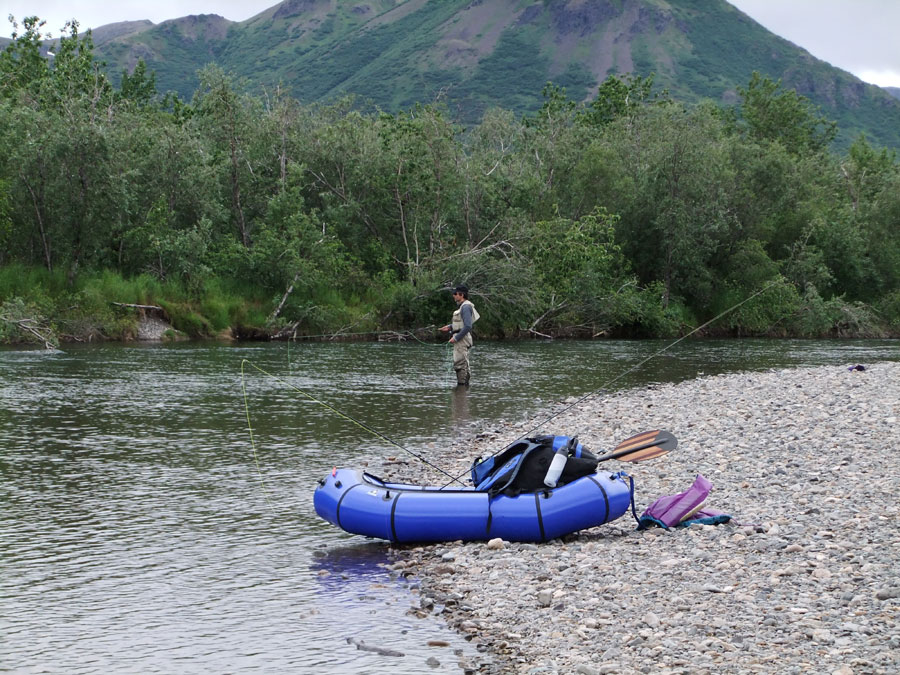
On this particular trip we were travelling relatively light with 1 canoe (2 persons) and 1 pack raft (1 person). We find that for packing small boats, it's best to carry your grub and all other gear in a variety of small bags. Loading the boats is more effective, and it's also easier to stay organized that way. The food bags were organized and labeled by their contents: 1 for canned goods; 1 for vegetables; 1 for dried items; etc. On this trip, we had 2 significant portages, so we also carried 2 large bags for consolidating the small items when had to carry them.
We lived comfortably from this menu. It also included enough food to sustain us for several days in the event that we were weathered in beyond our pick-up date. We offer it up here to help illustrate what we've been talking about, and to maybe help you put together your own float trip choices someday. Keep in mind that this menu was not set in stone. A lot of mix-and-match can – and did - go on. Do you want to make a cole slaw to go with fresh grilled salmon fillets? Chop cabbage and shred carrots, add lemon juice, vinegar, olive oil, salt, and a bit of hot sauce and you've got it. Serve the fillets and slaw with tabouli, and now you have an easy streamside dinner that doesn't appear "on the menu". Also, our lunches were filled out by leftovers, including sandwich spreads made from cooked salmon, mayonnaise, and vegetables.
On a final note, we'd love to hear from you with your own menu suggestions or tips, especially if it relates to the "easy, minimally refrigerated, and satisfying-and-sustaining" tack that we've tried to take here. Salud!
| Item | Quantity |
| Costco Pork Loin | 1 |
| Instant mashed potatoes | 1 pkg |
| Carrots | 3 |
| Spaghetti – red | |
| Canned sauce | 1 |
| Pasta noodles | 1 pkg |
| Venison sausage | 1 pkg |
| Onion | 1 |
| Garlic | 2 cloves |
| Spaghetti – clam sauce | |
| Angel hair pasta noodles | 1 pkg |
| Clams - canned or pouched | 2 (13oz) |
| Smoked salmon | 1 pkg |
| Garlic | 1 |
| Olive oil | |
| White wine | |
| Curry chicken & vegetables | |
| Curry sauce | 1 pkg |
| Rice | 1 cup |
| Chicken - canned or pouched | 2 (12 oz) |
| Onion | 1 |
| Bell pepper | 1 |
| Fresh Fish tacos | |
| Fresh fish | |
| Tortillas (also breakfast) | 1 pkg |
| Onion | 1 |
| Cabbage | 1 |
| Bell pepper | 2 |
| Bean and rice mix | 1 pkg |
| Lime juice | |
| Cajun spice | |
| Fish Chowder | |
| Fresh fish | |
| Dried creamy cheddar potato soup mix | 1 pkg |
| Clams – canned or pouch | 1 (6.5 oz) |
| Canned tomatoes | 1 can |
| Onion | 1 |
| Garlic | 2 cloves |
| Carrots | 2 |
| Fresh Broiled fish | |
| Fresh fish | |
| Rice | 1 cup |
| Thai Curry sauce | 1 pkg |
| Back-up | |
| Cous-cous | 1 box |
| Tabouli | 1 box |
| Dried soup large package | 1 pkg |
| Dried soup cups – Nile brand | 6 pkg |
| Knorr flavored pasta shells | 2 pkg |
| flavored beans | 1 pkg |
| Rice | 2 cups |
| Ramen noodles | 6 pkg |
| Breakfast | |
| 7 grain cereal | 1 pkg |
| Quick oats | 1 pkg |
| Tortillas (see above) | |
| Bagels (see below) | |
| Honey | 1 bottle |
| Syrup | 1 bottle |
| Dried fruit large package | 1 pkg |
| Dried blueberries | 1 pkg |
| Raisins | 1 lg pkg |
| Mixed nuts | 1 can |
| Ground coffee | 2 lbs |
| Lunch | |
| Summer sausage | 1 log |
| Smoked ham | 1 pkg |
| Salami | 1/3 log |
| Smoked salmon | 1 pkg |
| Cheddar cheese | 1 pkg |
| Wassa crackers | 3 pkg |
| Bagels (also breakfast) | 12 |
| Candy bars | 1 pkg |
| Misc Food | |
| Beef jerky large package | 1 |
| Cliff bars large box | 1 |
| Cream cheese packages – 20 | 1 |
| Jam | 1 sm jar |
| Tea / hot chocolate | 2 box |
| Carrots (see above pork loin) | Bunch |
| Spices | |
| Salt & pepper | |
| Cajun spice (see above) | 4 oz. |
| Vinegar | 4 oz. |
| Hot sauce | |
| Mayo (several individual packages) | |
| Mustard | |
| Lemon juice (see above) | 4 oz. |
| Lime juice (see above) | 4 oz |
| Butter flavored Crisco | 1 pkg |
| Olive oil (see above) | 8 oz |
| Misc kitchen | |
| Aluminum foil | 1 roll |
| Paper towels (blue shop towels) | 1 roll |
| Garbage bags | 3 large |
| Zip lock bags | 4 large |
| Toilet paper | 2 rolls |
|
|
|
| Buy in DILLINGHAM | |
| Stove fuel | |
| Butane striker | |
| Bear spray | |
| Beer | |
| Wine | |
| Charcoal Briquettes |

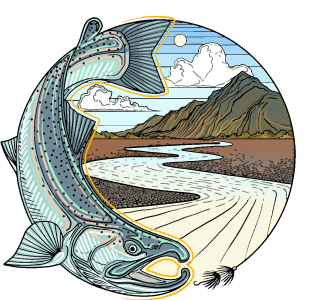
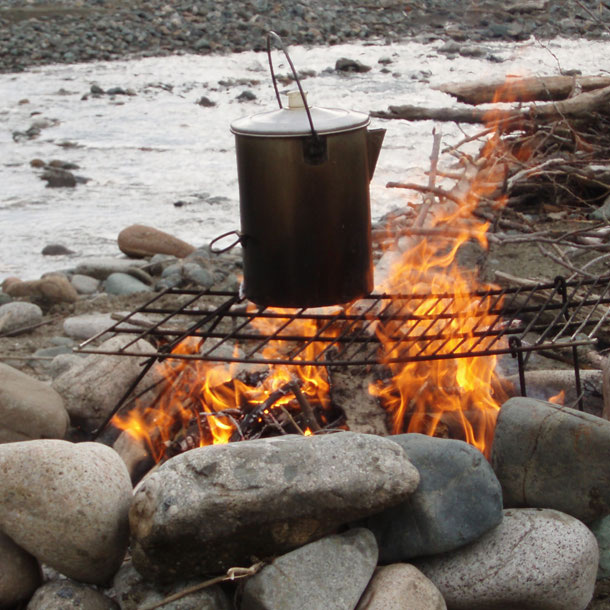

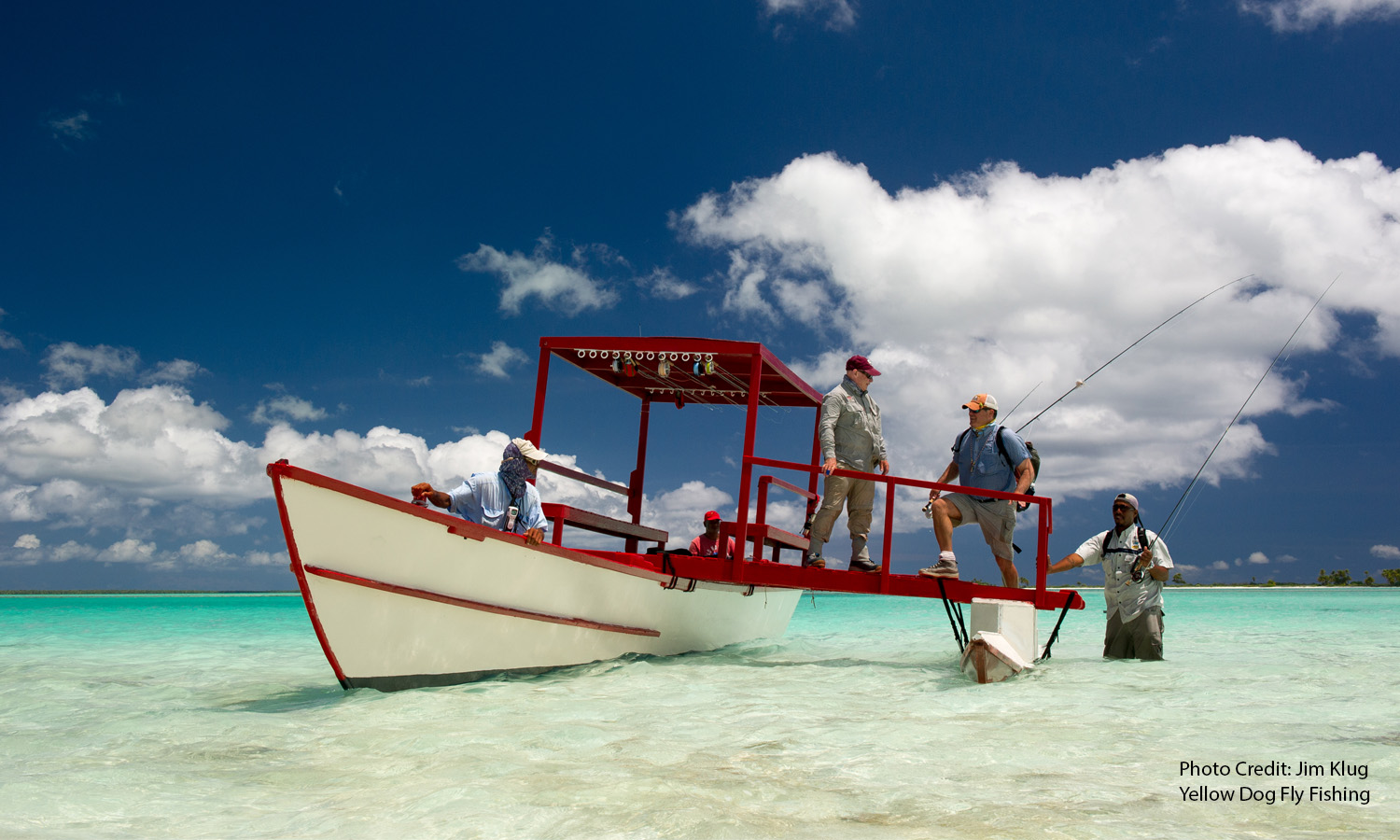
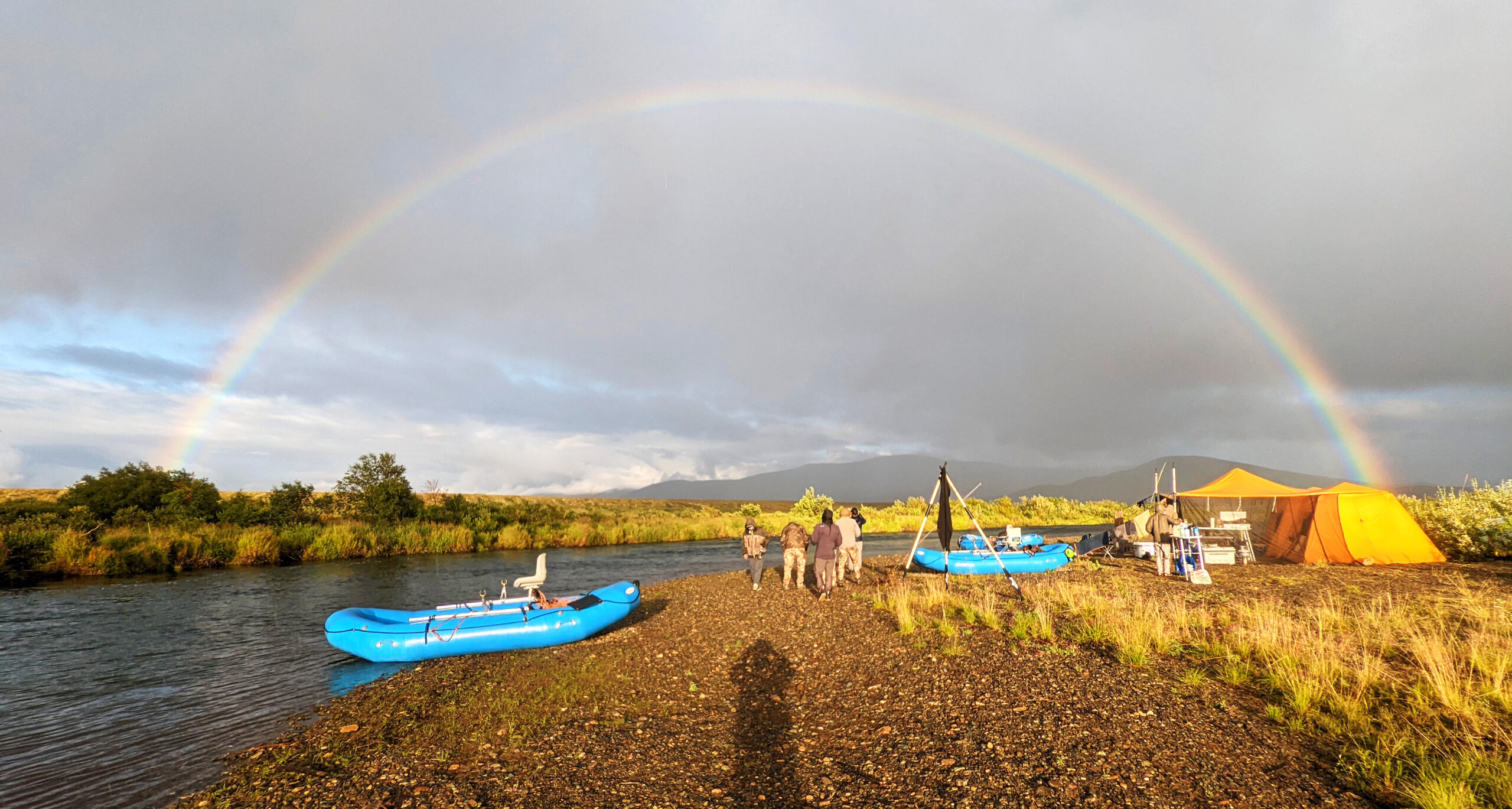

How did you store food at night to avoid the bears and critters?
FROM THE AUTHOR:
The most secure way to store food on a float trip is with bear-resistant containers. We have used a variety of containers over the years, including smooth plastic kegs and cannisters, aluminum dry boxes, metal barrels, and certified bear-resistant coolers.
Note that in most National Parks, including Katmai Park in Alaska (where there is excellent fishing), bear-resistant containers for food and garbage are required. A reference for various types of containers that are endorsed for backcountry use by the Parks Service can be found here:
http://igbconline.org/certified-products-list/
We are also fans of electric fences when we travel in bear country. Our most common strategy is to
set up our camp tarp and cook area away from our tents, then rig the electric fence to surround the tarp / cook site. We store the food and garbage Inside the fence perimeter.
Thanks for the awesome tips!! Very helpful!